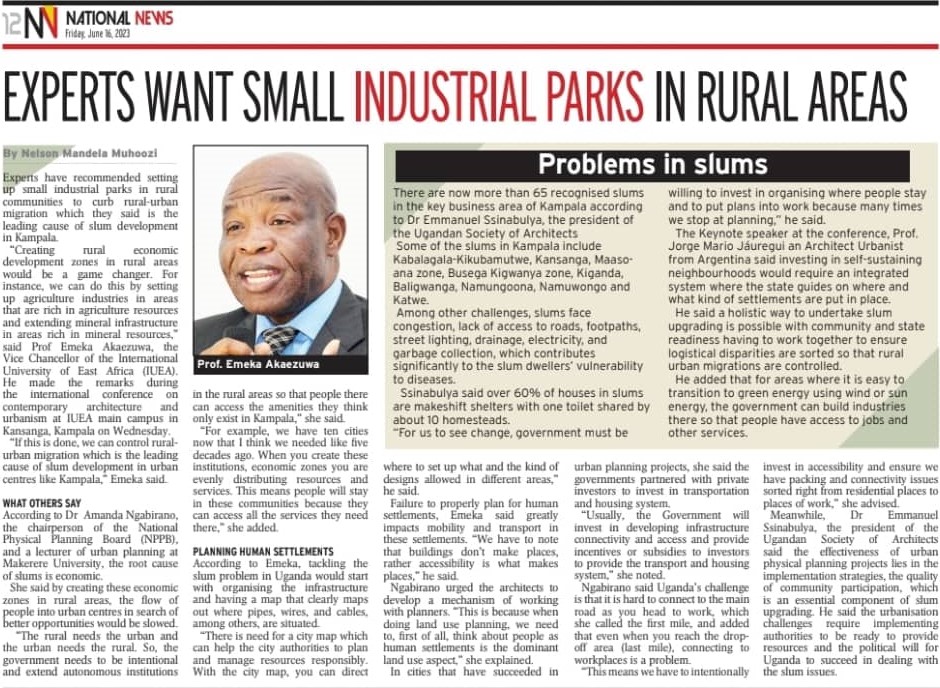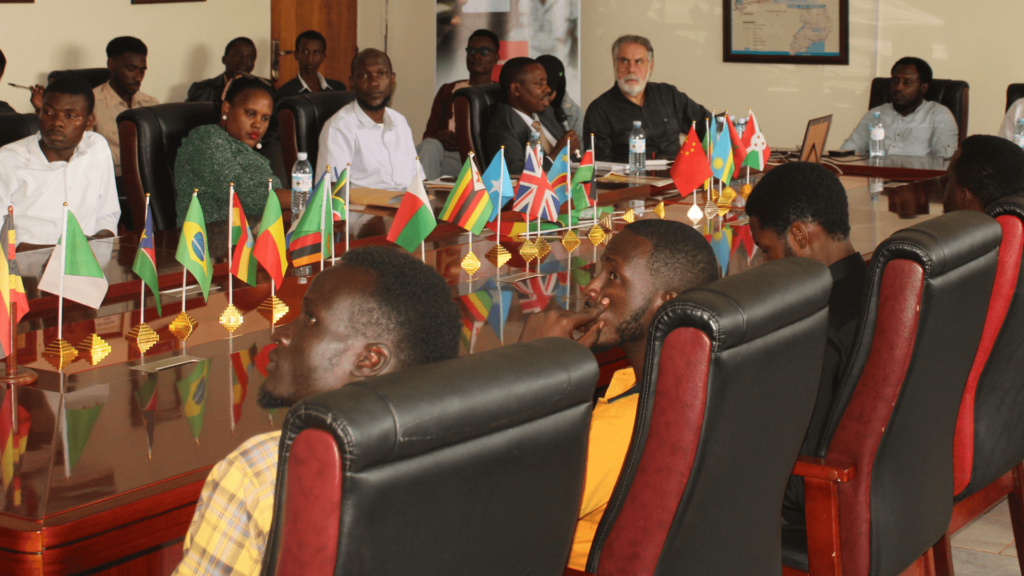Limited mobility in Africa remains one of the main hurdles stagnating the continent’s development. To combat this, the second session of the 6th International Conference on Contemporary Affairs on Architecture and Urbanism, hosted by the International University of East Africa, gathered experts from across the globe via a conference call. Having dealt with slums in Africa, the ICCUAU turned its sights to mobility in Africa. Students of IUEA’s internationally accredited engineering courses witnessed professionals as they discussed solutions uniquely designed for Africa’s social, economic and environmental conditions.
Does public transport exist in Uganda?
“Without transport we wouldn’t be here today”
– Said Dr. Amanda Ngabirano, Chairperson of the National Physical Planning Board (NPPB)
Dr. Amanda frankly revealed that there is no such thing as public transport in Uganda because public transport needs to be on time, have a social element and provide services like wireless internet connectivity. The informal version that persists in Uganda is due the financial limitations of those that cannot afford the formalities and the rich that profit from the informality.
What factors have hindered efforts to improve mobility in Africa?
In Africa, “poverty and scarcity are worse than on any other continent”
– Said Arch. Hassan Hussin, PhD candidate
True lasting change requires the acceptance of the community affected. This was made abundantly clear as different speakers iterated that the informalities that exist in Africa’s transportation systems today are the result of a scarcity of wealth and the prevalence of corruption.
Social and cultural norms have also proven problematic in the improvement of mobility in Africa. In certain cultures, women are relegated to only certain responsibilities and thus are not permitted to be part of the decision making process.
“We need to try to mitigate the data scarcity”
– Said Hassan Hussin, PhD candidate
The availability of detailed and accurate information is a vital part of the decision making process. There has been limited information regarding road networks and travel patterns and preferences in Africa thus hindering or delaying the implementation of effective solutions to limited mobility in Africa.
“Equivalent to 1.5 million US dollars are lost everyday” due to the poor mobility in Uganda,
– Said Eng. Andrew Muhwezi, President of the Uganda Institute of Professional Engineers.
Africa is also the second most populated continent in the world which has compounded the issues of scarcity and congestion which in turn limits mobility in Africa.
What are some of the solutions to limited mobility in Africa?
“If we do nothing about the transportation and leave it to grow in a linear fashion, we will have a 75% increase in greenhouse gas emissions…. if we complement it – the implementation of monorail and BRT – with city level interventions like bike lanes and improved buses, we will only have a 7% increase against a 100% increase in the population”
– Explained Hassan Hussin, PhD candidate
Environmental considerations necessitate a shift from motorized transport to more green solutions to mobility in Africa like biking. The reliance on non-motorized forms of transportation is not only better for the environment but would also not require large scale changes to the infrastructure.
“Our transport systems don’t cater for vulnerable groups.”
– Said Eng. Andrew Muhwezi, President of the Uganda Institute of Professional Engineers.
Vulnerable segments of the population such as women, children and the elderly are often put at risk by the informal nature of transport in Africa. In order to ensure everyone is catered for, vulnerable groups need to be included in the planning process.
“12% of earnings are lost due to traffic” in Cairo.
– Said Mr Hegazy Abdelrahman
A major impediment to Africa’s economic development is traffic and congestion. It is therefore important for the architects of tomorrow to design houses with connectivity to prevent vehicular traffic.
There is a need for the implementation of more efficient data collection strategies. Governments need to build decentralized capabilities for data collection and adopt modern data tracking technologies along with city level knowledge repositories.
Another proposal was the adoption of Rabbit mobility. This is a micro mobility platform that relies on the use of short distance and environmentally friendly means of transportation such as electric scooters and electric bikes.
The Award Ceremony
The session concluded with an award ceremony through which the university expressed its appreciation for the speakers at the event and the students that attended the IUEA Summer Architecture School Seminar.
Featured













